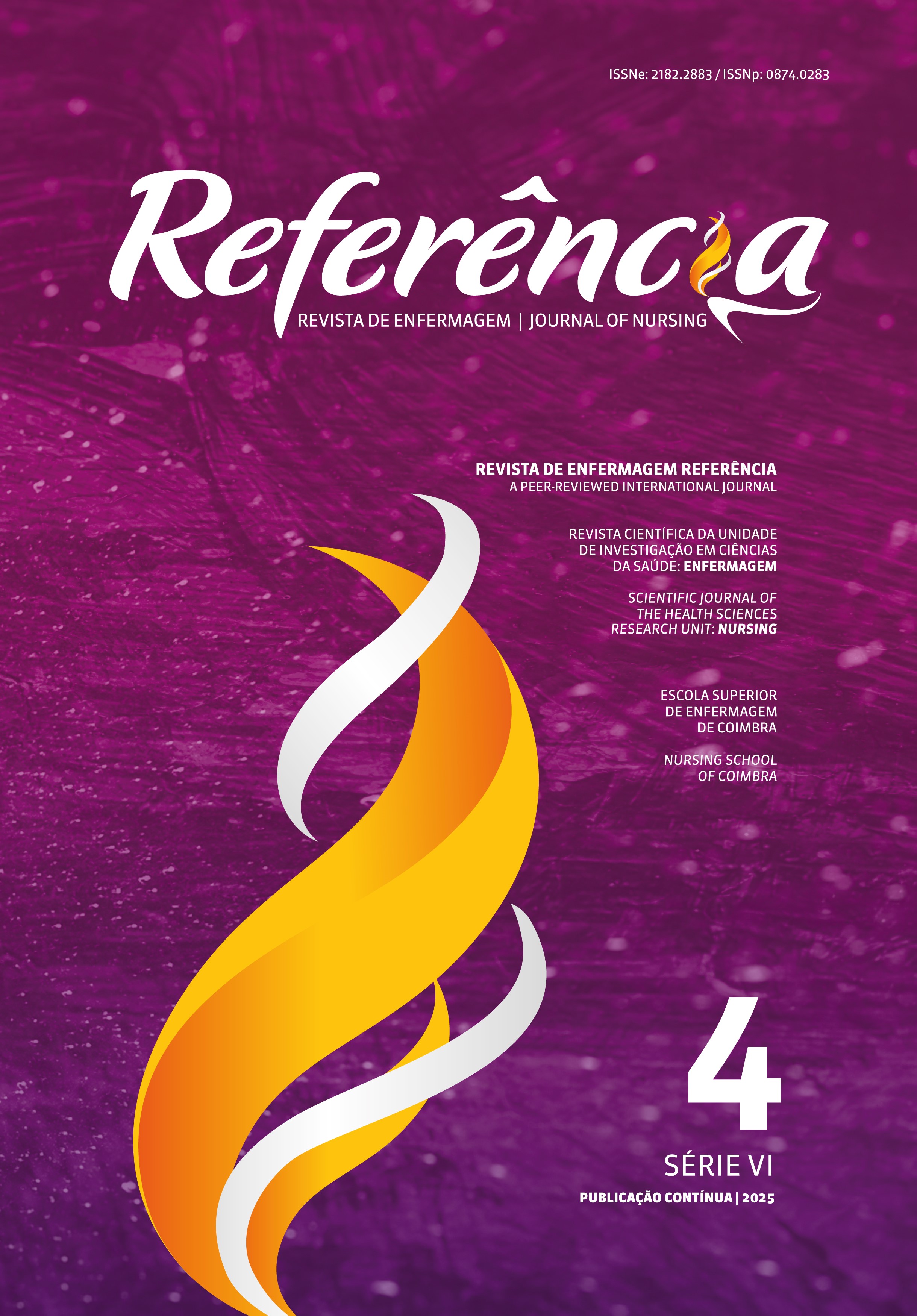Escala de Preocupação com a Imagem Corporal Durante a Gravidez: Traducción y validación para la población portuguesa
DOI:
https://doi.org/10.12707/RVI23.87.32417Palabras clave:
imagen corporal, embarazo, validez, fiabilidadResumen
Marco contextual: La preocupación por la imagen corporal durante el embarazo puede causar diversos problemas. Comprender estas preocupaciones puede ayudar a los profesionales sanitarios a mejorar los cuidados a las mujeres embarazadas.
Objetivo: Adaptar y validar para la población portuguesa la Body Image Concerns During Pregnancy Scale, que fue traducida en la Escala de Preocupação com a Imagem Corporal Durante a Gravidez (EPICDG).
Metodología: Estudio cuantitativo transversal en el que participaron 231 mujeres embarazadas. Las propiedades métricas de la EPICDG se evaluaron mediante análisis factorial exploratorio y confirmatorio
Resultados: La versión portuguesa con 21 ítems mostró índices de ajuste idénticos a los de la escala original. El modelo con mejor calidad fue el que tenía las cuatro subdimensiones de la escala original (X2(176) = 446,320; p < 0,001, X2df = 2,536; CFI = 0,91; TLI = 0,89; GFI = 0,86; RMSEA = 0,077, p < 0,001).
Conclusión: Los resultados muestran que la validación de la escala para el idioma portugués tiene propiedades psicométricas adecuadas para evaluar las preocupaciones sobre la imagen corporal durante el embarazo.
Descargas
Citas
Borsa, J. C., Damásio, B. F., & Bandeira, D. R. (2012). Adaptação e validação de instrumentos psicológicos entre culturas: Algumas considerações. Paidéia, 22(53), 423–432. https://doi.org/10.1590/S0103-863X2012000300014
Brunton, R., Simpson, N., & Dryer, R. (2020). Pregnancy-related anxiety, perceived parental self-efficacy and the influence of parity and age. International Journal of Environmental Research and Public Health, 17(18), 6709. https://doi.org/10.3390/ijerph17186709
Carter, J. J., & Vartanian, L. R. (2022). Self-concept clarity and appearance-based social comparison to idealized bodies. Body Image, 40, 124–130. https://doi.org/10.1016/j.bodyim.2021.12.001
Chan, C. Y., Lee, A. M., Koh, Y. W., Lam, S. K., Lee, C. P., Leung, K. Y., & Tang, C. S. (2020). Associations of body dissatisfaction with anxiety and depression in the pregnancy and postpartum periods: A longitudinal study. Journal of Affective Disorders, 263, 582–592. https://doi.org/10.1016/j.jad.2019.11.032
Finlayson, K., Crossland, N., Bonet, M., & Downe, S. (2020). What matters to women in the postnatal period: A meta-synthesis of qualitative studies. PLoS ONE, 15(4), e0231415. https://doi.org/10.1371/journal.pone.0231415
Fuller-Tyszkiewicz, M., Skouteris, H., Watson, B., & Hill, B. (2012). Body image during pregnancy: An evaluation of the suitability of the body attitudes questionnaire. BMC Pregnancy and Childbirth, 12(1), 91. https://doi.org/10.1186/1471-2393-12-91
Güney, E., & Uçar, T. (2018). Breastfeeding attitude of body image in pregnancy and effect on breastfeeding process?. Zeynep Kamil Tip Bülteni, 49(1), 49-53. https://doi.org/10.16948/zktipb.338783
Hannon, S., Newnham, E., Hannon, K., Wuytack, F., Johnson, L., McEvoy, E., & Daly, D. (2022). Positive postpartum well-being: What works for women. Health Expectations, 25(6), 2971–2981. https://doi.org/10.1111/hex.13605
Hernández, A., Hidalgo, M. D., Hambleton, R. K., & Gómez-Benito, J. (2020). International Test Commission guidelines for test adaptation: A criterion checklist. Psicothema, 32(3), 390–398. https://doi.org/10.7334/psicothema2019.306
Khosravi, H., Mehrbakhsh, Z., Moghasemi, S., & Samiei, G. (2023). Preferred mode of delivery association with the body image and genital image in pregnant women: A cross-sectional study. BMC Pregnancy and Childbirth, 23(1), 490. https://doi.org/10.1186/s12884-023-055893
Kuipers, G. (2022). The expanding beauty regime: Or, why it has become so important to look good. Critical Studies in Fashion & Beauty, 13(2), 207–228. https://doi.org/10.1386/csfb_00046_1
Laughter, M. R., Anderson, J. B., Maymone, M. B., & Kroumpouzos, G. (2023). Psychology of aesthetics: Beauty, social media, and body dysmorphic disorder. Clinics in Dermatology, 41(1), 28–32. https://doi.org/10.1016/j.clindermatol.2023.03.002
Lavender, V. (2007). Body image: Change, dissatisfaction and disturbance. In S. Price (Ed.), Mental health in pregnancy and childbirth (pp. 123-146). Churchill Livingstone/Elsevier.
Lee, M., & Damhorst, M. L. (2022). Women’s body image throughout the adult life span: A living history approach. Journal of Women & Aging, 34(6), 810–827. https://doi.org/10.1080/08952841.
2015197 Leeuw, E. D., Hox, J. J., & Dillman, D. A. (Eds.). (2008). International handbook of survey methodology. Lawrence Erlbaum Associates.
Legrand, F., Silete, G., & Schiffler, F. (2020). Internalized media-promoted body ideals only marginally moderate the effects of exercise on self-esteem, body image satisfaction, and physical self-perceptions. Research Quarterly for Exercise and Sport, 91(4), 713–719. https://doi.org/10.1080/02701367.2019.1706713
Marôco, J. (2021a). Análise de equações estruturais: Fundamentos teóricos, Software & aplicações (3ª ed.). Report Number.
Marôco, J. (2021b). Análise estatística com o SPSS statistics (8th ed.). Report Number.
Marôco, J., & Garcia-Marques, T. (2006). Qual a fiabilidade do alfa de Cronbach? Questões antigas e soluções modernas? Laboratório de Psicologia, 4(1), 65–90. http://publicacoes.ispa.pt/index.php/lp/article/viewFile/763/706.
Marta-Simões, J., Mendes, A. L., Trindade, I. A., Oliveira, S., & Ferreira, C. (2016). Validation of the Body Appreciation Scale-2 for Portuguese women. BMC Health Services Research, 16(3), 82–92. https://doi.org/10.1186/s12913-016-1423-5
Matos, D. A., & Rodrigues, E. C. (2019). Análise fatorial. Enap.
McComb, S. E., & Mills, J. S. (2022). The effect of physical appearance perfectionism and social comparison to thin-, slim thick-, and fit-ideal Instagram imagery on young women’s body image. Body Image, 40, 165–175. https://doi.org/10.1016/j.bodyim.2021.12.003
Mueller, A. N., & Grylka-Baeschlin, S. (2023). Self-management, care needs and clinical management of primiparous mothers during early labour: A qualitative content analysis. BMC Pregnancy and Childbirth, 23(1), 191. https://doi.org/10.1186/s12884-023-05453-4
Musaei, S. (2023). The effect of pregnancy on the skin. Eurasian Journal of Chemical, Medicinal and Petroleum Research, 2(1), 17-23. https://doi.org/10.5281/ZENODO.7353400
Riquin, E., Lamas, C., Nicolas, I., Dugre Lebigre, C., Curt, F., Cohen, H., Legendre, G., Corcos, M., & Godart, N. (2019). A key for perinatal depression early diagnosis: The body dissatisfaction. Journal of Affective Disorders, 245, 340–347. https://doi.org/10.1016/j.jad.2018.11.032
Simbar, M., Nazarpour, S., Alavi Majd, H., Dodel Andarvar, K., Jafari Torkamani, Z., & Alsadat Rahnemaei, F. (2020). Is body image a predictor of women’s depression and anxiety in postmenopausal women? BMC Psychiatry, 20(1), 202. https://doi.org/10.1186/s12888-020-02617-w
Tavares, M. F., Santos, A. P., Silva, S., & Mendes, J. (2023). The influence of pregnant’s body image on the decision to breastfeed: A systematic review. Revista Portuguesa de Investigação Comportamental e Social, 9(1), 1-12. https://doi.org/10.31211/rpics.2023.9.1.281
Tylka, T. (2019). Body appreciation. In N. Piran & T. L. Tylka (Eds.), Handbook of positive body image and embodiment: Constructs, protective factors, and interventions (pp. 22–32). Oxford University Press.
Tylka, T. L., & Wood-Barcalow, N. L. (2015). The Body Appreciation Scale-2: Item refinement and psychometric evaluation. Body Image, 12, 53–67. https://doi.org/10.1016/j.bodyim.2014.09.006
Uçar, T., Güney, E., Cesur, B., & Yurtsal, Z. B. (2018). The scale for body image concerns during pregnancy: Development and validation. Perspectives in Psychiatric Care, 54(3), 416–421. https://doi.org/10.1111/ppc.12287






















